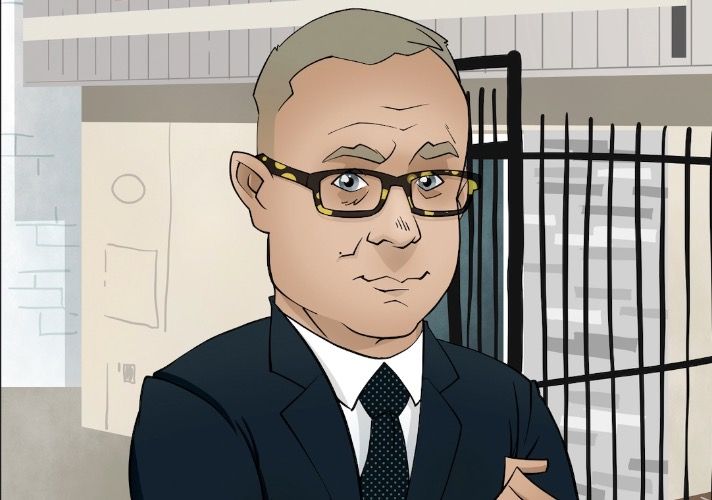
Which Pain/Healing Medicine is Best For Spinal Cord?

Which Pain/Healing Medicine is Best For Spinal Cord?

What are spinal cord injuries (SCI)? Certain medications help relieve various complications such as inflammation, chronic pain, depression, spasticity, and bowel or bladder issues.
While exercise and therapy are crucial aspects regarding treatments, medical drugs are also essential for symptoms such as pain.
However, taking prescribed drugs does not always result in a positive outcome, as many have adverse effects. Are you dealing with a spinal cord injury case?
Pain/Healing Medicine Best for Spinal Cord Injuries
Our friendly and charismatic lawyers do not only concern themselves with your compensation but also your health. Michael Ehline, an expert in the medicinal and legal field, was previously disabled from the US Marines under honorable conditions. Therefore, Ehline treats your case as a personal experience due to having gone through similar encounters.
This article discusses the best pain or healing medications used to treat spinal cord injuries apart from physical exercise.
What are the Risks Associated with Spine Medications?
A spinal cord injury victim who suffers from musculoskeletal or health problems commonly uses several drugs to treat their complications. According to medical research that provides health information, 31% to 87% of spine injury victims are on five or more prescriptions for treatment.
While using several drugs is a usual standard of care in treating spinal cord injuries, it can harm a person’s health and hinder recovery.
A muscle relaxant, for example, can aid with pain relief and cause nausea and dizziness. This affects a person’s motivation and desire to do the workouts they need to improve their health. Hence, finding the ideal combination of drugs to help people handle symptoms while still engaging in daily life is critical.
We will look at the following medical drug options doctors recommend.
We’ll also look at what other people use both on and off-label to treat serious complications or pain associated with spine injuries as follows:
- Corticosteroids
- Antidepressants
- NSAIDs
- Narcotic analgesics or opioids
- Anticonvulsants
- Antibiotics
- Antispasmodics and muscle relaxants.
Medication for Treatment of Spine Injuries
Reducing inflammation and alleviating secondary health complications, medication or anti-inflammatory drugs may help improve the quality of life after a spinal or musculoskeletal injury and minimize physical pain.
You are about to learn about seven widely used spine injury drugs, the symptoms they treat, and the dangers they entail on people’s health.
Corticosteroids
Corticosteroids are a form of medication that helps prevent back pain and damage to the spine in the early stages of SCI.
Following a spine injury, the body initiates biochemical mechanisms to stabilize the spine. However, by decreasing blood flow, raising inflammation, inhibiting axon regrowth, and overexciting neurons, the chemicals can cause further damage to the system or one’s health.
Methylprednisolone and other corticosteroids are effective prescribed drugs that may mitigate the impact of specific secondary processes and overall harm to health. However, this substance is controversial because of the high risks and lack of standardization.
The most common side effects of this include anxiety, dizziness, insomnia, and vomiting.
Antidepressant Drugs
Depression is normal after an SCI and can lead to a loss of motivation, inability to focus, fatigue, and shifts in sleeping and eating patterns. It hurts a person’s physical and mental health.
Fortunately, exercises and treatments manage and control depression. Antidepressant drugs such as SSRIs and SNRIs can raise neurotransmitter levels that regulate pain perception and people’s moods.
SSRIs (selective serotonin reuptake inhibitors) raise serotonin levels when specific substances block serotonin reabsorption in the brain. Serotonin is a neurotransmitter that makes people feel better and improves the way people eat and sleep.
An SNRI, serotonin, and norepinephrine reuptake inhibitor function similarly to SSRIs, but these also prevent norepinephrine reabsorption, which is critical for awareness and energy regulation.
People need to enable their bodies to adapt before deciding whether or not these treatments are ideal for them. These medicines do not have an immediate impact and take a few weeks to kick in completely.
NSAIDs
Non-steroidal anti-inflammatory (NSAID) such as naproxen and ibuprofen are over-the-counter pain relievers used to treat back pain and other SCI-related pain.
SCI pain varies from mild to severe; doctors recommend NSAIDs for people with mild to moderate pain.
They relieve back pain or other pain and swelling by reducing the production rate of prostaglandins, which are essential in diminishing the way people perceive pain.
Narcotic Analgesics or Opioids
Doctors may prescribe a narcotic analgesic or opioid for people suffering from chronic severe pain due to SCI.
Potent analgesics connect to opioid receptors in the brain and stimulate neurotransmitters. These assist with controlling people’s mood, digestion, motion, back pain, and reward perception, among other things.
Although opioids are efficient pain relievers, they can also lead to tolerance and addiction. As a result, they are only suitable for short-term usage of pain relief.
Lethargy, dizziness, and constipation are all related side effects of opioids.
Anticonvulsants
Gabapentin and alternative anticonvulsants help people with spine damage control their neuropathic and back pain. Harm to the nerves causes neuropathic pain, which affects the stimulation of pain signals.
Anticonvulsants work by inhibiting the hyperactive perception of pain below the level of injury, thus reducing back pain.
Dizziness, fatigue, and loss of balance are common anticonvulsant side effects.
Antibiotics
Owing to paralysis or weakness of significant respiratory muscles like the diaphragm, abdominals, and intercostals, a person with higher levels of SCI has weak coughs, increased back pain, and reduced lung capacity.
Coughing dysfunction may occur, making removing secretions from people’s lungs challenging. They are more susceptible to respiratory infections such as pneumonia. Respiratory problems are the primary cause of death in people who have suffered an SCI.
Antibiotics destroy bacteria to avoid infection and assist in removing mucus accumulation from the lungs, making it easier to cough and breathe.
Antispasmodics and Muscle Relaxants
An antispasmodic, also referred to as anticholinergics, and relaxant help mitigate the symptoms of bladder or bowel issues, back pain, and paralysis after experiencing one of these injuries.
Damage to the spine can interrupt the processing of signals between the body and the nervous system. Consequently, muscles below the level of injury can contract unintentionally and cause back pain.
A muscle relaxant and antispasmodic aim to inhibit the transmission of messages that trigger the contraction of muscles.
People can take these medicines orally, by injection, or by surgical implantation into the vertebrae. A few strategies may be better than others, depending on how spasticity and back pain affects the body. Specialists should preferably inject muscles directly if contractions or pain only occur in one leg, for example.
It is essential to remember that these drugs only offer temporary relief from paralysis, back pain, or chronic pain because they do not treat the root cause, which is nerve damage. People should engage in physical therapy activities to develop neuroadaptive improvements in the vertebrae for long-term treatment against back pain or other pain.
Related negative symptoms include reduced blood pressure, sedation, and dizziness.
The Management of SCI Medications
Your doctor will use medicines and treatments to treat secondary complications, including nerve pain, neuropathy, back pain, bladder and bowel issues, exhaustion, and respiratory fatigue in the early stages of SCI.
Although drugs may significantly enhance the quality of life, improve health, and reduce pain, a person needs to exercise caution to prevent undesirable impacts that conflict with motivation levels and a person’s ability to seek rehabilitation, management, treatment, and physical therapy.
Do you have a greater understanding of the different types of drugs people can use following a spinal injury and how they function regarding pain and healing? Contact your doctor or subscribe to the website menu for the National Institute of Arthritis and Musculoskeletal and Skin Disorders for news regarding nerve health, exercises, and medicines.
Do You Need a Los Angeles Spinal Cord Injury Attorney for Injuries or Chronic Pain?
Unfortunately, the medical and health aspects of musculoskeletal injuries and pain are not the only thing you need to concern yourself with after an accident. You need to research and contact legal services to find a lawyer to help you receive compensation for physical injuries, emotional pain, and damages resulting from the accident.
The friendly spinal cord injury lawyers at the Ehline Law Firm commit to your case and help you find a medical lien doctor. This professional provides related medical and health treatments, therapy, exercises, and resources so you feel like a community member again. We offer a free case review, so take advantage of that. We empathize with you and want to help you get back on your feet!
Michael Ehline pledges to help all patients whose bodies have been seriously injured in an accident, whether the injury causes back pain, damage, or emotional trauma. We have a long list of happy customers who received compensation needed to pay their doctor. These spinal cord injury victims deserved medical and health treatments and required resources. We helped them in their quest for monetary compensation.
Schedule, A Free Consultation Over To Discover Rights To, Receive Pain Healing Medicine
Do you need medical drugs resulting from car accidents that were not your fault? To schedule free consultations with our Los Angeles law firm, call (213) 596-9642! You may also use our free online consultation form.
Victims can also subscribe to our newsletter to get faster answers to their legal questions about medical compensation or fill out our online contact form.
Categories
- A to Z Personal Injury Podcast
- Car Accident
- Government Tort Blog
- Insurance Law Blog
- Piloting and Aviation Accident Blog
- Premises Liability Blog
- Products Defect Blog
- Recreation-Sports Accident Blog
- Reports
- Service Related Cancer Blog
- Sexual Assault Blog
- Spinal Cord Injury Blog
- Torts, Examples, Explanations
- Train Accidents Blog
- TV, Media & Firm News
- Uncategorized
Firm Archive
Main Los Angeles Location


Michael Ehline
Michael Ehline is an inactive U.S. Marine and world-famous legal historian. Michael helped draft the Cruise Ship Safety Act and has won some of U.S. history’s largest motorcycle accident settlements. Together with his legal team, Michael and the Ehline Law Firm collect damages on behalf of clients. We pride ourselves on being available to answer your most pressing and difficult questions 24/7. We are proud sponsors of the Paul Ehline Memorial Motorcycle Ride and a Service Disabled Veteran Operated Business. (SDVOB.) We are ready to fight.
